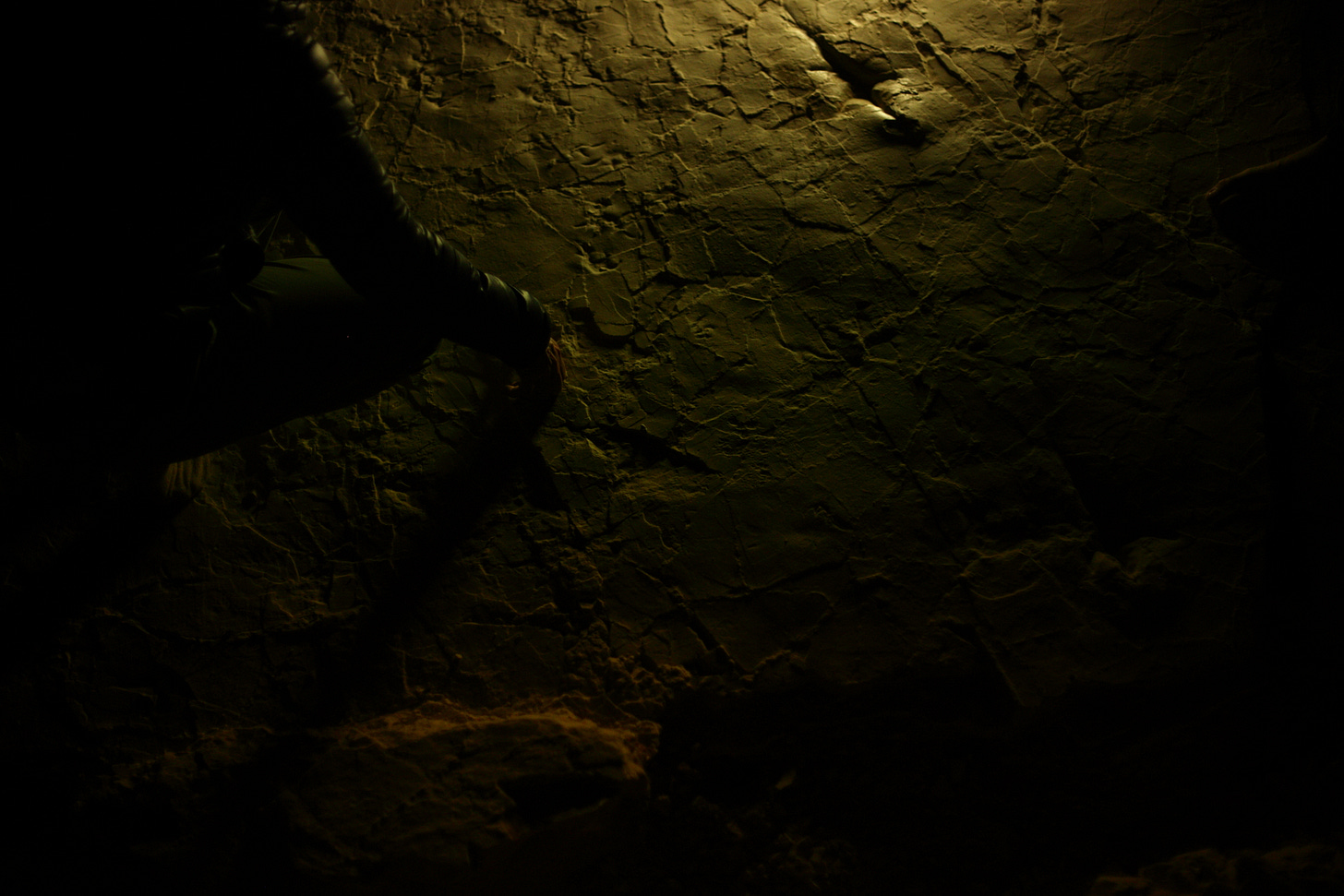9. The fossils in the dark room
Neither frozen nor mundane
En français
Last week I found myself telling stories about the times when I was in a rock band in the nineties. One of the few regrets I have is that, at the time, I didn’t want to take my camera and chronicle the events of my life, so I have no photos of these picaresque adventures. I remember thinking, with the naïveté and arrogance of youth, that art had to be more symbolic, maybe not allegoric, but clearly detached from the artist’s life, and that chronicling mundane events had nothing to do with it.
My youth was probably making me attribute a very different value to the time passing, when most of my life was still ahead of me, than I do now at almost fifty.
I saw this state of mind I was in at the time, radically expressed in the beginning of the film Begotten by E. Elias Mehrige. I remember being attracted to the radical putting of words on the card, but I also remember I was starting to have my doubts at that time.
The paradoxical side of this statement is that it is indeed being made at the beginning of a film, a technological audiovisual linear dream, and using nothing like a “language of matter forever” as it exists in the statues on the facades of cathedrals for example. A film, even somewhat allegorical, with universal themes and intensely visual and visceral like this one, is still closer to a collection of photographs than it is to an ancient stone circle.
What about the “frozen” “present that never stops passing”, now that I fully am a bearer of langage, and not even of my native one, a photographer, and a diary maker?
It is true and has been abundantly discussed, that cinema and photography use time in a very different way. I’m thinking about Andrei Tarkovsky’s great book about cinema, called Sculpting in Time, which is beautiful way to talk about films, and Henri Cartier Bresson’s influential Decisive Moment.
Indeed, photography is able to present a distortion of time. It is able to give to the viewer the opportunity to look at something that has been usually taken in a fraction of a second, but thinking it’s just mechanically freezing its subject appearance is denying the fundamental way the human mind, body and cognition is at work there.
There are two cameras, the one you have in your hand and the one you have in your mind. I can conjure a 50mm frame in my head wherever I am, without looking through the viewfinder. The technological, automated, fast nature of photography enables the photographer to make the action of pressing the shutter resonate with something as tenuous and fleeting as a visual feeling or mood, an intuition about a light, confidence in what the body feels, and not merely coldly selecting a slice to be cut from the veil of reality. I see it more like realizing the conjunction between reality and the image in the mind, mind which I envision like a camera obscura.
I like to present the photos I make this way in a carefully selected, chronological succession.
I spent last week lost in the dream of the old house, and I got out of it this week with the beautiful daylight illuminating the house on the hill, only to discover later a similar darkness, a seasonal atmosphere has taken hold of the outside natural world, neither really scary nor comforting, just a bit too early. Going back one hour to the standard time is like an infuriating jump-cut in the natural cycle. It seems like the night was gone and is now suddenly back.
On Sunday, we went to visit a paleontological site, next to where we live, where one can see a jurassic beach, frozen in stone. At the surface you can see the traces left by many animals millions of years ago, notably pterosaurs.
The paleontologists are able to interpret the traces left, to know who they belonged to and what they were doing there. A giant housing structure has been built upon them, because they have to stay in the dark, protected from the elements, or the images would be lost, like a roll of film in a darkroom.
From just a few footprints, the scientist is able to understand a pterosaur was running and suddenly made a U-Turn, for a forgotten reason, in a what was maybe a decisive moment for this animal. To think this small living creature left a tenuous trace hundreds of millions of years ago, and that we are able to still conjure images in our heads from it is astounding.
More than that, I find it moving.
A collection of fossil dreams, that tell a more complex, overarching story.
Thank you for reading!
À bientôt !
Alain






























Excellent read. In my Substack Darkrooms I also talk about the camera in your hand and in your mind. I call it the analogue/digital dark room and the mental darkroom. Both are not equally important, the mental is far more determining the outcome.
Thanks! I agree with you. The mechanical one just has to act as expected, but the mental one is subject to many influences. I'm sure you have experienced like me the days where you see photos everywhere and the days where there's nothing to be seen. The perfect link between the two for me is the 50mm lens. I have good guesses with the 35mm, which I love, but not as easy and accurate.